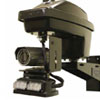
Selling A Proactive Approach
Educated end users reduce costs, increase protection
- By Rolland Trayte
- Jun 01, 2012
In the physical security industry, an ounce of prevention is definitely worth a
pound of cure. No one knows that better than Laurie M. Morris, president
of Warren Protective Services Ltd., headquartered in Toronto.
The company has been in business in Ontario for more than three decades,
bringing forward-thinking security guard and private investigation
solutions to its customers. In 2007, to complement its professional guard services,
Warren Protective Services introduced to market the software-based S.T.R.O.M.,
a patented, Web-based tracking tool geared to bring more effective guarding to the
industry through efficient reporting and analysis. The company recently became
an authorized dealer in Canada for the FutureSentry First Responder automated
detection technology system.
Morris, who has served as president of Warren Protective Services since 2003,
said the company’s guiding mission is to educate users on how important it is to be
proactive and preventative in physical security in order to stop or deter incidents
before they happen. To drive the message home to his team and robust client base,
Morris dedicates himself to client relations, security assessments, education, private
investigation and advancements in service and general policy measures.
When Morris investigated the FutureSentry First Responder at this year’s ISC
West in Las Vegas, he said he was genuinely excited about the potential for the
perimeter detection solution and could see how it would fit with the firm’s philosophy
to deter crime before incidents occur.
“The bottom line is that we all have to be more proactive in our security measures,”
Morris said. “In order to do that, we have to use every available tool—including
deploying the FutureSentry First Responder.”
Morris said that he and other security providers struggle to keep up with new
technologies and even become complacent because of the wide range of systems
and products introduced on a regular basis.
“I’m not embarrassed to admit that we too fell into the same trap as to not recognize
advancements in the world of technological security,” Morris said. “Simply
put, we became complacent and content, ignoring technology.”
At ISC West, Morris met with the FutureSentry team and witnessed a demonstration
of the First Responder and its capabilities.
“Finally, this was a solution that could address the needs of crime prevention
and further complement the security guard solution,” he said.
Proactive Perimeter Detection
Warren Protective Services continued discussions with FutureSentry and its executives
after the show, spending countless hours getting educated on the perimeter
detection system, its capabilities and how to position and sell it within the company’s
current business model.
“We had access to the entire FutureSentry team, including executives, and that was
impressive,” Morris said. “Several months later, we became an authorized dealer.”
Today, Warren Protective Services has a sales representative dedicated to marketing
FutureSentry’s First Responder and continues to build its brand and strategies
for deployment to existing and new customers. In fact, while it is currently
positioned for the commercial side of the business, the First Responder also can
be extremely effective in residential applications, Morris said.
“As in other aspects of our business, our approach continues to be to educate
our clients so they can assist in the deterrence efforts,” Morris said. “When we approach
a prospective client, we first educate them in the area of security. We point
out that even though they may use a security guard and cameras, their perimeters
are still, in effect, unprotected. As such, preventing and deterring crime before it
happens remains critical.”
The FutureSentry First Responder is an automated perimeter detection solution
that mimics the actions of a security guard to prevent crime before loss or
damage occurs. By leveraging advanced motion detection technology, it automatically
identifies potentially dangerous targets within
700 feet and tracks objects to
deter criminal behavior.
It can be integrated with IP or analog surveillance that can be recorded for
video evidence or forensics.
“Its capabilities further provide a sufficient reactionary response, allowing security
professionals, through various alerts and integration with other systems,
including cameras, to take appropriate action as necessary,” Morris said. “It has
also proven to eliminate threats without any human response or required action.
This alone not only achieves effective security control but additionally protects the
security professional from engaging in a potential life safety, at-risk situation. It
provides them with a tool to react effectively and safely by dispatching the correct
resources warranted.”
Morris said the First Responder is a fraction of the cost of what it would be to
install numerous stationary or PTZ cameras, which need to be monitored 24/7 to
be most effective.
“It only requires one camera and will cover more area with its 360-degree capabilities—
within a 700-foot range—providing the level of required reaction and
eliminating the overabundance of camera installations,” he said. “Therefore, it reduces
cost while increasing protection.”
According to Morris, FutureSentry’s award-winning solutions allowed Warren
Protective Services to enter into an arena that has “opened many doors and new
opportunities.” The company has been able to meet clients that it typically would
never have had contact with and thereby to grow and expand its diverse range of
security solutions.
Morris said the company’s beliefs stand firm. “In order to accomplish effective
security practices, perimeter detection is the first line of
defense. FutureSentry’s First Responder is that defense and enhances
the effectiveness of any security practices and security
guard professionals.”
This article originally appeared in the June 2012 issue of Security Today.